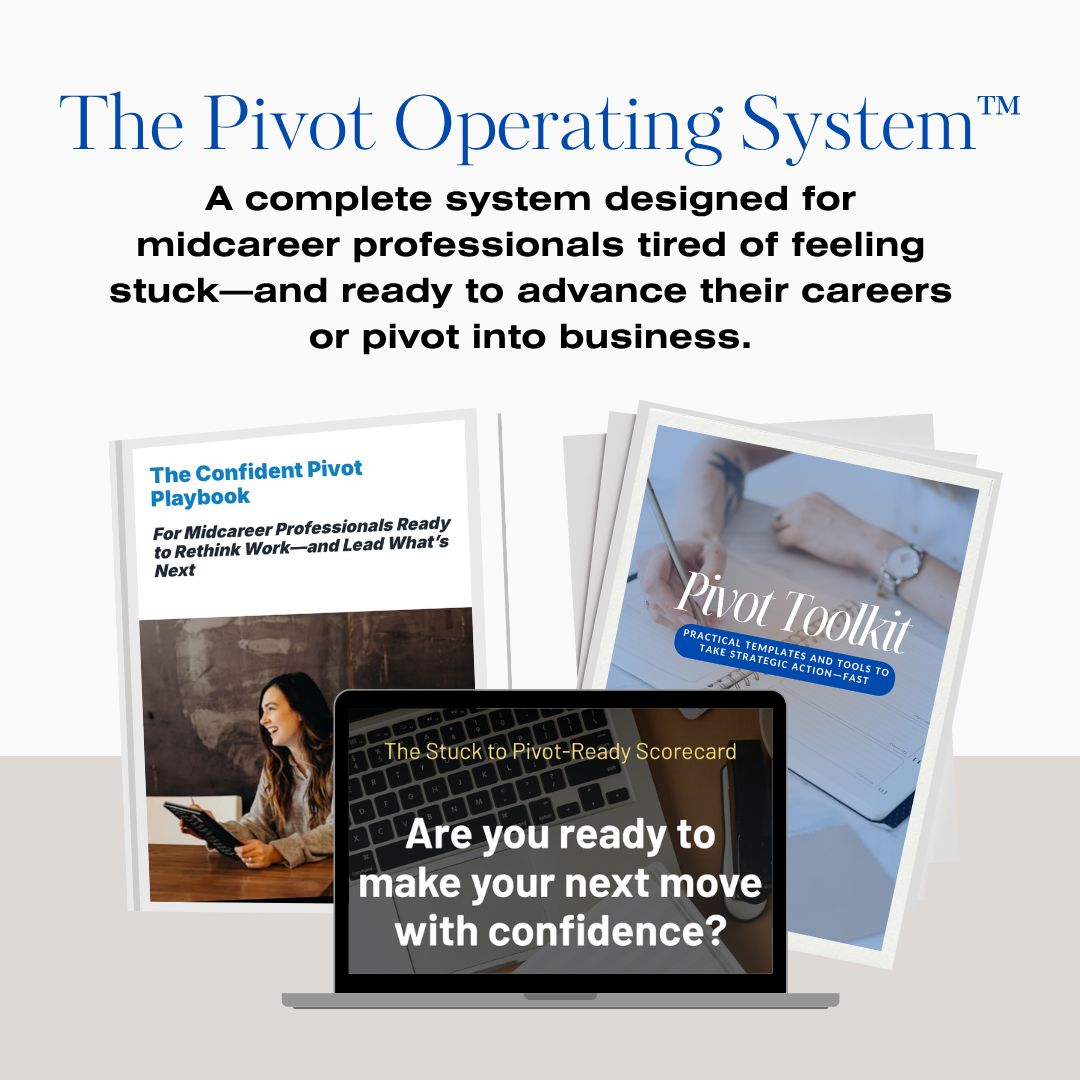FIRST THINGS FIRST:
Grab your Heads-Up Framework Checklist for initiating difficult conversations early with clarity, control, and mutual respect.
Most problems don’t start big.
They start as quiet tensions.
A misalignment in values.
A subtle boundary crossed.
A silence that should’ve been a signal.
By the time the issue finally explodes into a missed deadline, a fractured partnership, or a broken team dynamic, it’s often too late for an easy fix.
High-trust relationships aren’t built on perfect harmony.
They’re built on courageous clarity, early and often.
Honest disagreement is often a good sign of progress.
If you want to be seen as a trusted voice, someone others want to follow or partner with, this one soft skill will set you apart:
The ability to initiate difficult conversations before they’re urgent.
As subject matter experts and entrepreneurs, we often:
Don’t want to “rock the boat” or seem difficult.
Assume others already see the problem (they usually don’t).
Hope time or success will make the issue disappear (it rarely does).
But avoiding the conversation only increases the emotional interest rate.
And when the bill comes due, it’s brutal.
Here’s what waiting too long often costs:
Lost credibility when unspoken tension erodes trust
Poor decisions because issues were left unvoiced
Damaged teams from years of festering misalignment
Personal burnout from over-accommodating in silence
Ready to Move Forward In Your Career With Confidence?

If you're a midcareer professional feeling stuck, scattered, or unsure of your next move, this is for you.
The Pivot Operating System™ gives you everything you need to make bold, value-driven career decisions without the second-guessing.
✅ Get unstuck
✅ Build real momentum
✅ Advance your career or pivot into business with a plan, not pressure.
Influence Requires Early Alignment
The earlier you address discomfort, the more options you have to solve it.
Courageous communication isn’t just a moral virtue — it’s a practical leadership advantage.
Whether you’re managing a team, guiding clients, or building a brand, your ability to name what’s uncomfortable before it’s unmanageable is a mark of wisdom, not confrontation.
Here’s a simple tool to help you engage earlier, better, and without burning bridges.
The HEADS-UP Framework for Proactive Conversations
H: Hold the Assumption Loosely
E: Express the Impact Early
A: Ask for Their View
D: Define What You Want to Happen Next
S: Stay on Shared Goals
U: Use Neutral Language
P: Practice and Prepare

Gif by CrankYankers on Giphy

Let’s get it.
H – Hold the Assumption Loosely
Start with curiosity, not conclusions.
What works: “I may be misreading this, but I wanted to check in…”
What fails: “I already know what you’re thinking, but…”
E – Express the Impact Early
Say what you’re seeing or feeling before it escalates.
What works: “I’ve noticed we’ve missed a few key handoffs. I’m concerned it’s creating confusion.”
What fails: “This has been going on forever and I’m done.”
A – Ask for Their View
Invite perspective. Listen fully.
What works: “How are you seeing this?”
What fails: Talking for 10 minutes without a pause.
D – Define What You Want to Happen Next
Don’t just vent — propose or co-create a next step.
What works: “Would it help if we met weekly to check progress?”
What fails: “You just need to do better.”
Reconnect to what you both care about.
What works: “I know we both want this to succeed long-term…”
What fails: “I need this fixed now, or else.”
U – Use Neutral Language
Avoid blame. Focus on facts, behavior, and impact.
What works: “When deadlines shift without notice, it throws off the whole chain.”
What fails: “You’re just not reliable.”
P – Practice and Prepare
Hard conversations get easier with intention, not improvisation.
Draft what you want to say. Practice it out loud. Ask, “What tone would I want if roles were reversed?”
The longer you wait to say the hard thing, the harder it becomes and the less influential you seem when you finally say it.

Gif by LineOfDuty on Giphy
LEVEL UP
Soft Skill Self-Assessment Prompt
I want to be better at having difficult conversations before they escalate.
- What patterns of tension have I noticed lately but haven’t addressed?
- What am I afraid will happen if I speak up early?
- What conversation would most improve trust or alignment if I initiated it this week?
Give me one conversation to initiate and the best way to open it.
POLLS
Which of these keeps you from having hard conversations early?
What would help you most with difficult conversations right now?
CURATED ROUNDUP
What to Review This Week
Read: Difficult Conversations by Stone, Patton, and Heen (Harvard Negotiation Project)
Listen: How to Handle Conflict with Confidence by Zach Schaefer
Read: This Is Why We Avoid Difficult Conversations by Nicklas Balboa
Watch: We Need Difficult Conversations by Simon Sinek
Get a dose of soft skills development while on the go with Blinkist.
In Case You Missed It!
Grab your Pocket Guide to Impromptu Conversations
(Essential questions and cues to connect quickly—without sounding rehearsed)Make Better Decisions in Minutes—Not Days
Learn the formula for doing deep work in a world of distraction.
Transform small talk into deeper connections with proven conversation strategies

The Bottom Line
Real influence means being willing to say what others won’t with care, clarity, and consistency.
Don’t wait for resentment to do the talking.
Speak early.
Speak clearly.
And lead the kind of relationships where progress doesn’t require a crisis.
Thanks for reading. Be easy!
Girvin
EXPERTS & ENTREPRENEURS:
Looking to build a lean, profitable internet business in 2025?
The Creator MBA provides a comprehensive blueprint for launching, developing, and sustaining a profitable online business.
What did you think of today's newsletter?



